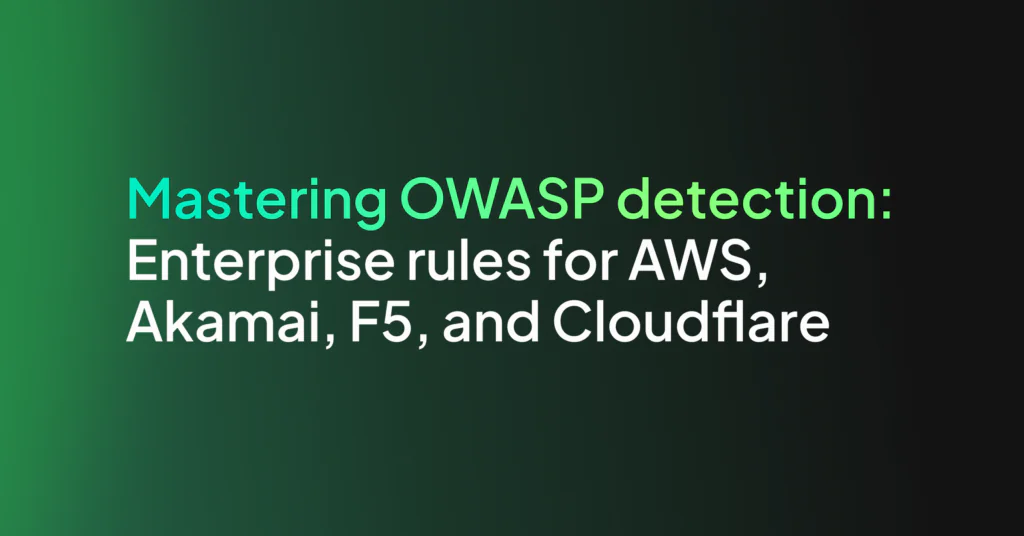Harnessing AIOps to Improve System Security

You’ve probably seen the term AIOps appear as the subject of an article or talk recently, and there’s a reason. AIOps is merging DevOps principles with Artificial Intelligence, Big Data, and Machine Learning. It provides visibility into performance and system data on a massive scale, automating IT operations through multi-layered platforms while delivering real-time analytics.
In short, it’s a movement away from siloed operations data to a holistic approach that encompasses system-wide analysis and management from a single ML-integrated platform.
As you can imagine, AIOps has multiple system security and resilience benefits. One of the reasons the AIOps movement is gaining such momentum is that an AIOps based approach has already significantly enhanced system security and resilience.
Why do businesses want the enhanced security of an AIOps based infrastructure?
The risk of attack from cybersecurity threats has never been higher. You’re undoubtedly aware of the many high-profile cyberattacks and data breaches that have occurred in the last few years.
There is a reason Joe Biden signed an executive order in early 2021 mandating cybersecurity best practices for US government bodies. By 2025 cybercrime will cost the global economy $10.5 trillion per year. In the US, a cyberattack occurs every 39 seconds. It’s not if your systems are attacked, it’s when.
The cost of cyberattacks to your business
The costs of cyberattacks to your business are astronomical. One of the most high-profile recent cybersecurity incidents was the Colonial Pipeline ransomware attack of May 2021. The security breach by hacker group DarkSide cost the Colonial Pipeline Company an estimated minimum of $5 million.
Small businesses aren’t immune, either. The average setback for small businesses that experience a cyberattack is $25,000. No matter the size of your systems, more and more organizations are waking up to the reality that system security cannot be low-priority.
How AIOps improves system security
To understand how AIOps can apply to system security, you’ll have to understand the basics of how AIOps works.
Enterprise systems are multi-surfaced, multi-dimensional beasts – they’re complex. Keeping them secure requires a different approach than methodologies rooted in monolithic systems, such as SIEM.
The AIOps manifesto sums up the AIOps method best with the five dimensions of AIOps:
Data set selection
To respond to security threats in real-time means acting fast. That’s why data set selection is a cornerstone of AIOps secured systems.
Modern systems generate a lot of data noise. Many hackers and cybercriminals exploit this to slip into your systems undetected, blending in with the daily data traffic. Machine Learning algorithms in an AIOps platform parse the data noise at an immense scale.
Your ops and security teams can easily find and neutralize threats and trace their movements back to the penetration point. AIOps platforms create clean, curated data samples. The result removes the need for your ops/security teams to sift through terabytes of non-essential data noise to isolate threats or carry out root cause analysis.
Pattern discovery
Not only does an AIOps platform remove the need to curate data manually, but it also automates pattern discovery within the data sets it presents. An AIOps platform provides your ops/security teams with only relevant data, but it also explains why that data matters.
Pattern discovery uses a range of ML techniques to extract patterns from curated data. In a security context, this could mean anything from highlighting unauthorized packets during a DDoS attack to flagging which company email accounts open high volumes of virus-containing spam.
Inference
The inference is at the heart of what makes advanced Machine Learning so, well, progressive. AIOps makes full use of inference algorithms to deliver secure systems.
The ability to infer meaning from discovered patterns allows for highly complex alerts and an unparalleled level of insight from analytics, even in real-time.
‘Inference engines’ operate much like white blood cells. They remember threats, except instead of storing viral DNA, they remember patterns and anomalous data in the endless data noise your AIOps platform parses every second. When suspicious patterns or activity are identified, the algorithms in the AI can provide alerts that contain not only the nature of the threat but a recommended response based on previous events.
And thanks to the broader AIOps and cybersecurity communities, new use cases are implemented into the platform through automated updates. AIOps platforms can infer insight based on attacks that have occurred anywhere, not just within your systems.
Communication
Communication in an AIOps context translates to intuitiveness and ease of use. One key setback of early cybersecurity technologies was their complexity. There is a reason cybersecurity specialists are amongst the highest-paid IT professionals.
AIOps platforms have ease-of-use built-in as a core principle. If an AIOps platform cannot communicate its findings to a human engineer, its objectives have failed. Visualization, natural language summaries, and streamlined alerts and reporting are essential for a successful AIOps platform.
However, communication doesn’t just encompass AI and the human engineers who operate it. As with all modern technologies, AIOps platforms receive regular automated updates and maintenance. This includes other instances of the same platform, creating an “attack one of us, attack all of us” level of defense, which makes the lives of cybercriminals incredibly difficult.
Automation
Last but never least, we have the modern IT operations essential; automation.
We don’t need to explain to you exactly why automation is beneficial by this point. Modern systems are complex and change fast (mainly because of automation, in many cases). Modern security systems need to match this pace.
Automation is how AIOps manage to stay on top of fluid multidimensional attack surfaces and keep them secure. Every feature of the AIOps platforms we’ve mentioned is fully automated. That’s what makes them so strategically valuable: they allow cybersecurity teams to combat and protect against threats by removing the excessive manual efforts needed to find and isolate them.
AIOps cybersecurity use cases
The above explains how AIOps methodology fits into the context of system security. However, this doesn’t give much practical information about adopting AIOps into your cybersecurity strategy. Many organizations are already keeping their systems secure with AIOps platforms. Several use cases perfectly illustrate how AIOps-based security looks on the ground.
Ransomware and malware detection
The Colonial Pipeline attack was perhaps the most notorious use of ransomware in recent years. However, ransomware and malware attacks are still among the most common cybersecurity threats.
It’s estimated that ransomware/malware will cost the US economy $20billion in 2021. 39% of businesses attacked by ransomware end up paying ransom demands. It’s not a threat that should be taken lightly, even if you believe your business has no data or online assets worth ransoming. AIOps keeps hundreds of companies secure from this common yet incredibly dangerous threat.
The most dangerous ransomware/malware are variants whose signatures are unknown to the broader cybersecurity community (and the systems they update and operate). Automated large-scale event processing, pattern recognition, and ML inference make detecting malware or ransomware much easier. Even new variants.
ML algorithms can pinpoint new malware/ransomware variants based on behavior. In the simplest terms, AIOps platforms can adopt an “if it walks like a duck…” approach. This is much more effective than platforms that simply sweep systems for malicious code matching existing use case libraries.
Fraud detection
Malware and viruses aren’t the only cybersecurity threats faced by modern enterprises. Fraud detection is a crucial feature of your security approach, too. Especially in financial sectors such as banking and insurance, fraud detection has become essential for many IT operations and cybersecurity teams.
AIOps is proving incredibly valuable in this arena. Fraud detection involves a lot of inputs and data types, and all run through intensive processing, including anomaly detection, text mining, database searches, and social network analysis. These all then have to be combined with predictive models so that thorough fraud detection can become effective fraud prevention.
Automating all of this data wrangling has become indispensable for many organizations in the financial sector. Every year fraudulent actors become more advanced in their techniques. The automated and self-learning processes of AIOps platforms provide robust protection against the ever-changing threat landscape of modern fraud.
AIOps is already proving its worth by applying the five dimensions to fraud detection functionality in platforms. This was demonstrated perfectly in 2020 AIOps, and ML-supported fraud detection uncovered an extensive and sophisticated phishing scam network targeting Microsoft 365 users.
Endpoint and network behavior modeling
A security platform that can isolate attack indicators isn’t much use after the fact. Unfortunately, creating behavior models for endpoints and networks that preempt system compromising breaches is time-consuming and complex.
This is where AIOps has allowed operations and security teams to make incredible strides. Using Machine Learning and automation-enabled big data parsing and analytics, AIOps platforms can generate complex behavior models. As this is automated and incorporates advanced pattern recognition and inference algorithms, AIOps platform-generated behavior models are not only delivered faster. With significantly less manual input, they’re also, generally speaking, better.
These endpoint and network behavior models can detect much subtler indicators of an attack or a data breach than their manually coded counterparts. This allows your teams to react much faster, isolating suspicious behaving endpoints or flagged traffic before they become your organization’s latest data breach or cyberattack.
Security event management
As established, a great bulk of your security and operations team’s time can be lost parsing through the endless reams of data your systems generate. Logs and event data mount up fast. To respond effectively, your teams must spot indicators and patterns within vast data sets. The sheer scale of this task, especially in complex modern systems, makes AI-assisted security event management not only sensible in 2021 but almost a requirement.
Simply put, there is so much data noise in modern systems that it’s becoming unreasonable for humans to manage their security manually. AIOps uses machine learning to cut through the data noise and make effective security management a reality again.
AIOps platforms allow for intelligent decision-making and alerting configurations in a way that doesn’t burn out your security and operations staff. It will enable them to be everywhere at once, know where they’re needed, and understand what’s required there without countless hours pouring through logs and event data.
Threat intelligence analysis
It is threat intelligence that encompasses everything an AIOps platform can achieve for your system security.
AIOps platforms provide a greater level of intelligence, system visibility, and real-time analytics than many other security solutions. Due to the sheer scale of data, an AIOps platform can parse, analyze, and provide intuitive insight that allows your operations/security teams a more precise level of threat intelligence than ever before.
Whether it’s identifying impending attacks before data is breached or system-wide security event management that includes cloud-based components, AIOps platforms enable threat intelligence analysis fit for the ever-changing cybersecurity landscape of the 21st century.
Adopting an AIOps security model with the Coralogix platform
We’ve already established that failing to invest in robust security for your systems creates more costs than saves. If you haven’t recently updated your cybersecurity policies, there has never been a better time. If you’re convinced that the AIOps model is the way forward for your organization, the Coralogix platform is what you need.
Our platform is designed from the ground up to enable organizations to analyze data at the scale needed for a fully AIOps security strategy. Our platform’s machine learning algorithms can analyze 100 million logs plus a day. They’re both powerful and intelligent enough to support pattern discovery as outlined in our AIOps security use cases.
What’s more, our dynamic alerting system uses ML to adjust thresholds responsively to the data processed by the platform. This makes it easier for your security and operations teams to ensure no threat remains undetected and malicious users are detected in record time.
These are just some of the ways our existing users have leveraged the Coralogix platform to keep their systems secure. Get in touch if you’re ready to harness AIOps to increase your system security.




